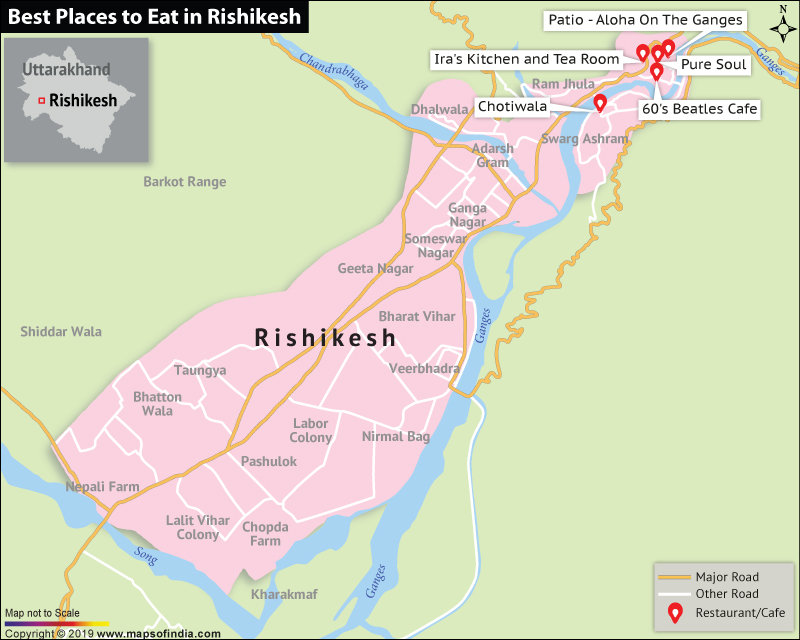Sunderbans National Park – West Bengal
Sunderbans is a UNESCO World Heritage Site covering an area of around 1,330 km. This is a must-visit place and should be No 1 destination for ecotourism lovers. Part of West Bengal, the Sunderbans National Park is a large, mostly marshy land and is made up of several rivers, tributaries, water channels, forests and islands that together form a massive estuarine delta.
The vast mangroves of Sunderbans are home to the famous Royal Bengal Tiger, and the Sunderbans Tiger Reserve is dedicated to preserving the tigers along with maintaining the ecological balance.
Sunderbans is also a Bioreserve Park and nature lovers can get to see a wide range of animals, flora and fauna that is unique to this region. While visiting the Sunderbans, do not miss out on visiting the Bhagabatpur Crocodile Project Farm which is working hard to preserve the large salt-water crocodiles that are native to this place. Its adjacent to Lothian Island, on the bank of Saptamukhi Estuary.
At the Sunderbans you may get to see the leopards, foxes, macaques, jungle cat, wild boar, chital and a lot of other animals not seen in other parts of India. Endangered species that are found here include Olive Ridley Turtles, horseshoe crabs, Ganges river Dolphin, hawksbill turtle and many others.
Other places to visit here are – Sagar Island, Sajnekhali Bird Sanctuary, Haliday Island, Buridabri Tiger Project and Jambudweep.
Getting there: Sunderbans is located around 150 km from Kolkata and is best experienced by boat run by the West Bengal Tourism Corporation. One can also catch a train from Kolkata to Canning, which is the last station and on the edge of the Sunderbans.
Rajamala National Park, Kerala
Also known as Eravikulam National Park, this wonderful bio-rich 97 square-km park is located around 15 km from Munnar. The park is home to Nilgiri Tahr, the south India mountain goat. This is also a UNESCO Heritage project.
Driving through the meandering greens of the Munnar region is a pleasure and while visiting Eravikulam, one has several additional choices of visiting other rich bio-diversity parks in the region which include Mathikettan Shola National Park, Chinnar Wildlife Sanctuary, Anamudi Shola National Park, Kurinjimala Sanctuary and the Pambadum Shola National Park.
During the monsoons and just after, the region is a green paradise which offers rich flora and fauna. The famous Cauvery and Periyar rivers run though the region. Don’t miss out on visiting the Lakkom Waterfalls.
Wildlife unique to this place include the Nilgiri Tahr, Nilgiri Langur, Nilgiri Wood Pigeon, Golden jackal, striped-neck mongoose, Indian Muntjac, among many others.
Getting there: By Air – Cochin is the nearest airport. From there one has to drive to the site. By Rail – The nearest station is Ernakulum Junction, Kochi.
Chilika Lake, Odisha
Chilika Lake happens to be the world’s second largest coastal lagoon and the largest of its kind in India. Spread across a vast area of 3,500 km, Chilika is home to the famous Irrawaddy Dolphins, Spoon-billed Sandpiper, Indo-Pacific Tarpon, Egrets, Grey and Purple Herons, Dalmatian Pelican, Spot-billed Pelicans. The region is home to over 700 species of plant varieties. The waters of Chilika hosts a large variety of reptiles and amphibians.
Getting there: By air – The nearest airport is Bhubaneshwar. From there, one can go by train to Balugaon or go by road. Balugaon station is the nearest railhead.
Kaziranga National Park, Assam
This 430- square-km World Heritage Site is home to the Great One-horned Rhino. Kaziranga has also been recognised as an Important Bird Area by BirdLife International as it is home for several bird species and migratory birds that seasonally fly in.
Kaziranga is characterised by tall elephant grass, dense broadleaf forests and marshlands. Besides the One-horned Rhino, Kaziranga is also home to tigers which thrive in the thick moisture-laden forests. A visit here can get one to see wild elephants, eastern swamp deer, Asiatic wild water buffalo, sloth bear, Indian civets, Bengal fox, fishing cat, hog badger, Assamese Macaque, among many others.
Few people know that Kaziranga is home to the Reticulated Python and Rock python, two of the largest snakes in the world. Visitors can move around in the park area on elephant rides or jeeps operated by the government.
Getting there: By air – Jorhat airport is the closest, at a distance of around 97 km; Guwahati is around 250 km – a five-hour drive.
Nanda Devi Biosphere Reserve, Uttarakhand
Spread over 630 square km, Nanda Devi National Park and Valley of Flowers together form the Nanda Devi Biosphere Reserve. The reserve is a UNESCO World Heritage site and is a nature lover’s paradise.
Best visited between March and September, the sheer beauty of verdant greenery nestled around beautiful mountains, makes it’s a great holiday-cum-study destination. Trekking through the region, one can come across rare Himalayan bird species, flowers and wildlife that are distinct to the area.
Nanda Devi Biosphere is a sanctuary for Himalayan Musk, Deer and Tahr, Himalayan Snow Leopard, Grey Mountain Langur, Rhesus macaque, Himalayan Black Bear, among many others.
Nanda Devi bio-diversity includes over 312 floral species and 114 bird species. The famous Rhododendron flower is found in abundance here – from which locals make Rhododendron juice. One can see forests of fir, birch and pine, which begin to thin out as one treks to the higher reaches.
The area is best explored on foot and offers some of the best trekking trails in the country.
Explore More…





